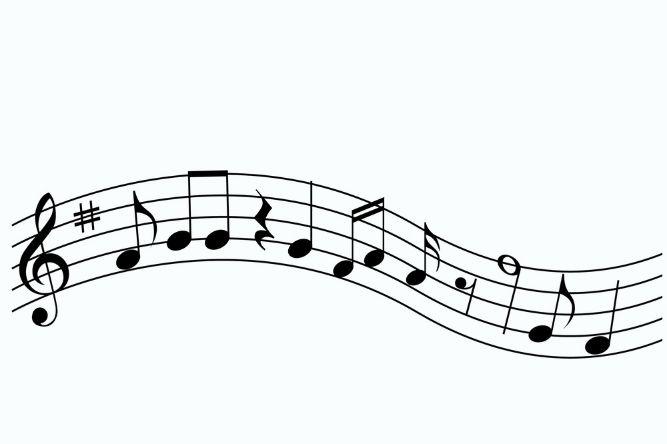Cadences are an essential factor in understanding music theory. Learning about what they are and how to utilize them will save you a lot of time when it comes down to playing or reading music. You may have several questions, which is why we are here to break down everything you need to know about cadences in music.
What Is a Cadence?
A cadence acts like punctuation but in a musical sense. It is typically made up of at least two chords that are next to one another at the end of a phrase.
Phrase?
When we speak or write, we tend to group words into phrases to create sentences. In music, we do the same with notes, to create rhythm and melodies.
Cadences assist in making the music feel complete, like a period in a sentence, or create a sense that there is more to come, like a comma. They help build the music up or wind it down, giving it a sense of direction.
Types of Cadences
As you begin to come across cadences, you might notice that there are some that sound complete while others do not. The reason for this is that there are four main types of cadences that you will hear:
The Authentic Cadence
The authentic cadence, also classified as a perfect or imperfect cadence, moves from the dominant chord V and the tonic chord I. Of all the cadences, this is the one that sounds the most finished.
- Perfect Authentic Cadence: The chords will be in root position, which means they will be placed in the bass, whereas the tonic will be the higher voice in the final chord. This will produce a stronger type of cadence found in music.
- Imperfect Authentic Cadence: There are three different kinds of imperfect authentic cadence. The root position IAC is where the highest voice is not featured in the tonic area. An inverted IAC is similar to an authentic cadence, but one or both chords will be inverted. A leading tone IAC is when the V chord is replaced, but the tonic will still end on the I chord.
The Plagal Cadence
A plagal cadence consists of the chord progression IV and I and is used at the end of a phrase in music, creating a sense of finality. It is often referred to as the “Amen cadence”, as it was commonly used to end Hymns.
The Half Cadence
The half cadence is when any cadence ends on a V chord despite whatever chord comes before it. It will usually sound incomplete and sometimes suspended, resulting in it appearing weak and calling for more. Half cadences are not typically used to end a piece of music but can be found in the beginnings of choruses or verses.
The Deceptive Cadence
The deceptive cadence (sometimes called an interrupted cadence) is the progression in which the V chord will move to a chord that is not the I chord. It is called “deceptive” due to the listener expecting to hear the resolution with the I chord but receiving an incomplete feeling instead.
Other Factors
Rhythm and Melody
As cadences are crucial in putting music together, other elements such as rhythm and melody play accompanying roles in producing a cadence. There are numerous possibilities and important aspects to remember when piecing it all together:
- The top notes in a phrase impact how an authentic cadence works.
- You will get a better sense of finality when a tonic note sits on top of a tonic chord.
- A strong or weak beat can impact the effect of a cadence. You may want to consider having the final chord fall on a strong beat instead of a weaker one.
- Keeping both chords in a root position can create a stronger cadence.
- If the chords are inverted, the cadence ending will be reduced.
How To Use Cadences
Understanding cadences is a helpful tool when it comes down to composing or arranging music. By knowing the basics, putting together different types of musical phrases will feel a lot easier. You can have anything from phrases that finish with a grand sense of finality, like with an authentic and plagal cadence. You can get a sense of continuation or of idleness in a phrase, like with a half cadence or deceptive cadence.
By combining different types of phrases, a bigger section of music can be produced, which can be identified as a “period.” A period is two or more phrases that go together.
When structuring music, a cadence should be at the end of every phrase, with the last cadence of a period being the strongest in the group. Phrases will usually come in groups, sometimes two, three, or more, but the last one will always be the strongest.
Music Radar suggests that listening to other songs by acclaimed musicians can aid in understanding and spotting cadences. Songs like I Will by The Beatles or Guilt by Nero are a couple of examples of a deceptive cadence and a perfect cadence. Listening is a useful tool in discovering how music works, especially in cases where cadences are involved.
Common Misconceptions
- Not every cadence has to act as a moment of rest in a song, nor does it need to end on a long note. You will notice many cases where this is present, but it is not a requirement in writing music.
- A cadence does not always need to end a song, as some of them are designed to create tension or bridge different parts of the song together.
- Some musicians may ignore their relevance, but cadences continue to influence music even today. Understanding the differences of plagal cadences and how to use a half cadence will be useful in composing music.
Anyone can access information about cadences through online music lessons provided by Academy of Music. We strive to ensure that your music knowledge expands and that any needs will be met with our lessons and information. Sign up today to improve your understanding and strengthen your musical talents.



